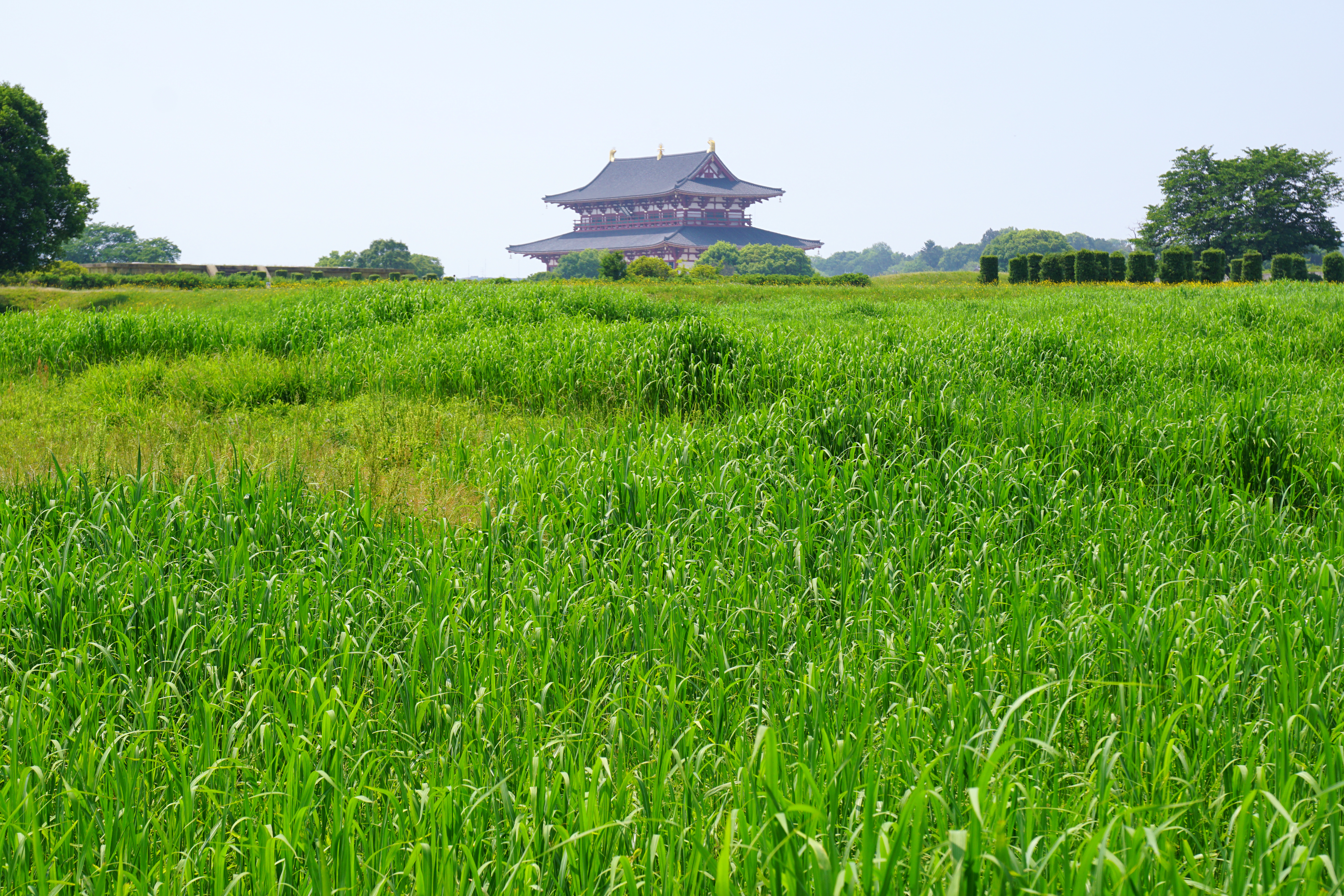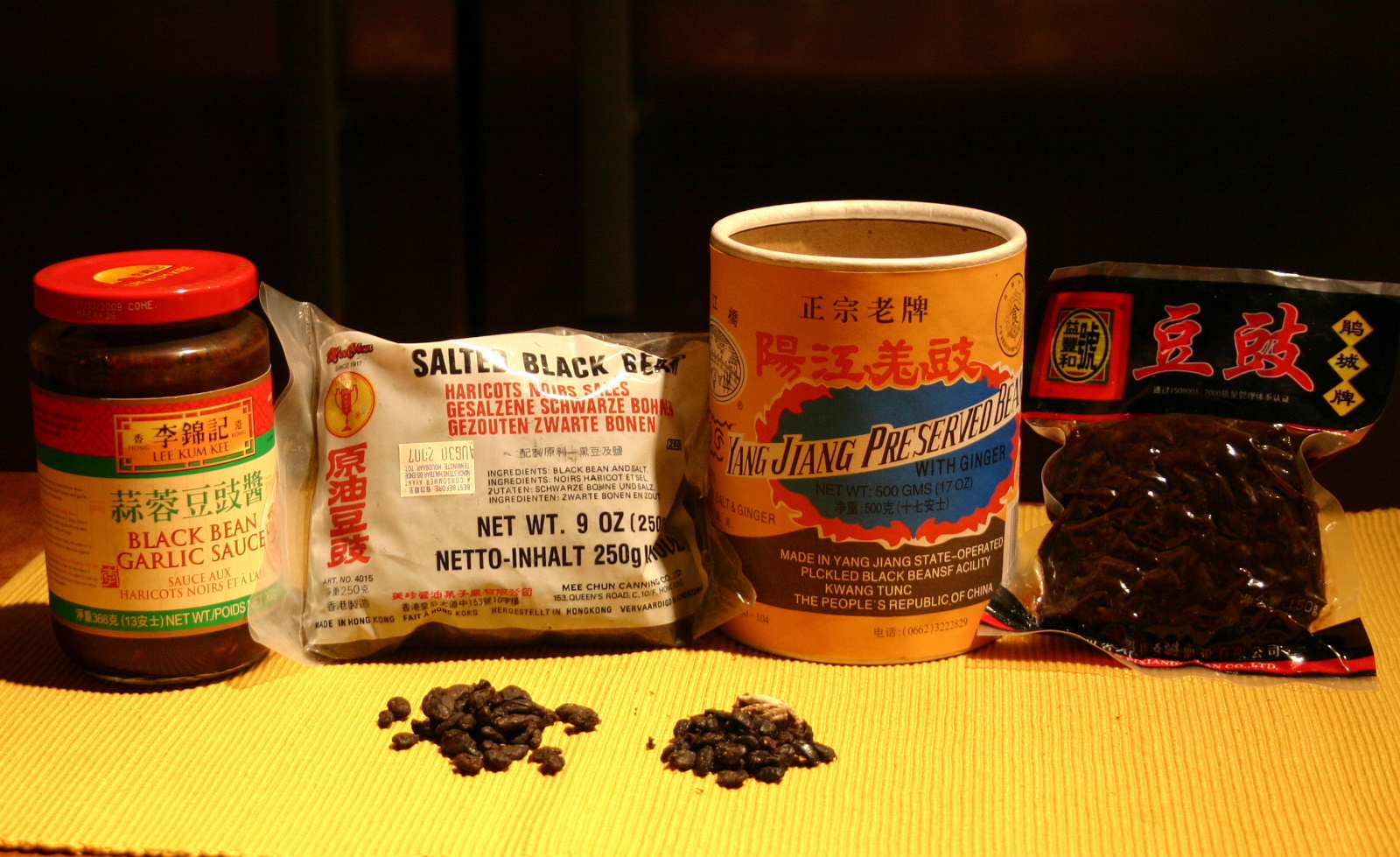|
Nattō
, spelled as natto in standard English language use, is a traditional Japanese food made from whole soybeans that have been fermented with ''Bacillus subtilis'' var. ''natto''. It is often served as a breakfast food with rice. It is served with ''karashi'' mustard, soy or ''tare'' sauce, and sometimes Japanese bunching onion. Within Japan, ''nattō'' is most popular in the eastern regions, including Kantō, Tōhoku, and Hokkaido. ''Nattō'' is often considered an acquired taste because of its powerful smell, strong flavor, and sticky, slimy texture. A 2009 survey revealed that 70% of Japanese people find the taste pleasant, and others who may not find the taste of the food pleasant still eat it out of habit. History Sources differ about the earliest origin of ''nattō''. One theory is that nattō was codeveloped in multiple locations in the distant past, since it is simple to make with ingredients and tools commonly available in Japan since ancient times. Legendary ori ... [...More Info...] [...Related Items...] OR: [Wikipedia] [Google] [Baidu] |
Japanese Cuisine
Japanese cuisine encompasses the regional and traditional foods of Japan, which have developed through centuries of political, economic, and social changes. The traditional cuisine of Japan (Japanese: ) is based on rice with miso soup and other dishes; there is an emphasis on seasonal ingredients. Side dishes often consist of fish, pickled vegetables, and vegetables cooked in broth. Seafood is common, often grilled, but also served raw as sashimi or in sushi. Seafood and vegetables are also deep-fried in a light batter, as '. Apart from rice, a staple includes noodles, such as soba and udon. Japan also has many simmered dishes, such as fish products in broth called , or beef in and . Historically influenced by Chinese cuisine, Japanese cuisine has also opened up to influence from Western cuisines in the modern era. Dishes inspired by foreign food—in particular Chinese food—like ramen and , as well as foods like spaghetti, curry and hamburgers, have been adapted to Japanes ... [...More Info...] [...Related Items...] OR: [Wikipedia] [Google] [Baidu] |
Acquired Taste
An acquired taste is an appreciation for something unlikely to be enjoyed by a person who has not had substantial exposure to it. It is the opposite of innate taste, which is the appreciation for things that are enjoyable by most persons without prior exposure to them. Characteristics In case of food and drink, the difficulty of enjoying the product may be due to a strong odor (such as certain types of cheese, durian, hákarl, black salt, nattō, asafoetida, surströmming, or stinky tofu), taste (as in alcoholic beverages, coffee, Vegemite or Marmite, bitter teas, liquorice/salty liquorice, South Asian pickles, malt bread, unsweetened chocolate, garnatálg, rakfisk, soused herring, haggis), mouthfeel (such as sashimi and sushi featuring uncooked seafood), appearance, or association (such as eating insects or organ meat). Examples The following items can be described as "acquired tastes", often due to combination of both unfamiliarity and intensity of taste. In principle, ... [...More Info...] [...Related Items...] OR: [Wikipedia] [Google] [Baidu] |
William Shurtleff
William Roy Shurtleff (born April 28, 1941) also known as Bill Shurtleff is an American researcher and writer about soy foods. Shurtleff and his former wife Akiko Aoyagi have written and published consumer-oriented cookbooks, handbooks for small- and large-scale commercial production, histories, and bibliographies of various soy foods. These books introduced soy foods such as tofu, tempeh, and miso on a wide scale to non-Asian Westerners, and are largely responsible for the establishment of non-Asian soy food manufacturers in the West beginning in the late 1970s. In 1980, Lorna Sass wrote in ''The New York Times'', "The two people most responsible for catapulting tofu from the wok into the frying pan are William Shurtleff and Akiko Aoyagi.” In 1995, Suzanne Hamlin wrote in ''The New York Times'', “At the turn of the century there were two tofu suppliers in the United States. Today there are more than 200 tofu manufacturers...and tofu can be found in nearly every supermarket." I ... [...More Info...] [...Related Items...] OR: [Wikipedia] [Google] [Baidu] |
Fermentation In Food Processing
In food processing, fermentation is the conversion of carbohydrates to alcohol or organic acids using microorganisms—yeasts or bacteria—under anaerobic (oxygen-free) conditions. Fermentation usually implies that the action of microorganisms is desired. The science of fermentation is known as zymology or zymurgy. The term "fermentation" sometimes refers specifically to the chemical conversion of sugars into ethanol, producing alcoholic drinks such as wine, beer, and cider. However, similar processes take place in the leavening of bread (CO2 produced by yeast activity), and in the preservation of sour foods with the production of lactic acid, such as in sauerkraut and yogurt. Other widely consumed fermented foods include vinegar, olives, and cheese. More localised foods prepared by fermentation may also be based on beans, grain, vegetables, fruit, honey, dairy products, and fish. History and prehistory Natural fermentation precedes human history. Since ancient times, h ... [...More Info...] [...Related Items...] OR: [Wikipedia] [Google] [Baidu] |
Fermentation (food)
In food processing, fermentation is the conversion of carbohydrates to alcohol or organic acids using microorganisms—yeasts or bacteria—under anaerobic (oxygen-free) conditions. Fermentation usually implies that the action of microorganisms is desired. The science of fermentation is known as zymology or zymurgy. The term "fermentation" sometimes refers specifically to the chemical conversion of sugars into ethanol, producing alcoholic drinks such as wine, beer, and cider. However, similar processes take place in the leavening of bread (CO2 produced by yeast activity), and in the preservation of sour foods with the production of lactic acid, such as in sauerkraut and yogurt. Other widely consumed fermented foods include vinegar, olives, and cheese. More localised foods prepared by fermentation may also be based on beans, grain, vegetables, fruit, honey, dairy products, and fish. History and prehistory Natural fermentation precedes human history. Since ancient times, h ... [...More Info...] [...Related Items...] OR: [Wikipedia] [Google] [Baidu] |
Protein (nutrient)
Proteins are essential nutrients for the human body. They are one of the building blocks of body tissue and can also serve as a fuel source. As a fuel, proteins provide as much energy density as carbohydrates: 4 kcal (17 kJ) per gram; in contrast, lipids provide 9 kcal (37 kJ) per gram. The most important aspect and defining characteristic of protein from a nutritional standpoint is its amino acid composition. Proteins are polymer chains made of amino acids linked together by peptide bonds. During human digestion, proteins are broken down in the stomach to smaller polypeptide chains via hydrochloric acid and protease actions. This is crucial for the absorption of the essential amino acids that cannot be biosynthesized by the body. There are nine essential amino acids which humans must obtain from their diet in order to prevent protein–energy malnutrition and resulting death. They are phenylalanine, valine, threonine, tryptophan, methionine, leucine, isoleucine, lysine, an ... [...More Info...] [...Related Items...] OR: [Wikipedia] [Google] [Baidu] |
Carbohydrate
In organic chemistry, a carbohydrate () is a biomolecule consisting of carbon (C), hydrogen (H) and oxygen (O) atoms, usually with a hydrogen–oxygen atom ratio of 2:1 (as in water) and thus with the empirical formula (where ''m'' may or may not be different from ''n''), which does not mean the H has covalent bonds with O (for example with , H has a covalent bond with C but not with O). However, not all carbohydrates conform to this precise stoichiometric definition (e.g., uronic acids, deoxy-sugars such as fucose), nor are all chemicals that do conform to this definition automatically classified as carbohydrates (e.g. formaldehyde and acetic acid). The term is most common in biochemistry, where it is a synonym of saccharide (), a group that includes sugars, starch, and cellulose. The saccharides are divided into four chemical groups: monosaccharides, disaccharides, oligosaccharides, and polysaccharides. Monosaccharides and disaccharides, the smallest (lower molecular wei ... [...More Info...] [...Related Items...] OR: [Wikipedia] [Google] [Baidu] |
Starter Culture
A fermentation starter (called simply starter within the corresponding context, sometimes called a mother) is a preparation to assist the beginning of the fermentation process in preparation of various foods and alcoholic drinks. Food groups where they are used include breads, especially sourdough bread, and cheese. A starter culture is a microbiological culture which actually performs fermentation. These starters usually consist of a cultivation medium, such as grains, seeds, or nutrient liquids that have been well colonized by the microorganisms used for the fermentation. These starters are formed using a specific cultivation medium and a specific mix of fungal and bacterial strains.Norman F. Haard, S.A. Odunfa, Cherl-Ho Lee, R. Quintero-Ramírez, Argelia Lorence-Quiñones, Carmen Wacher-Radarte, ''Fermented Cereals: A Global Perspective'', Food and Agriculture Organization, Rome, 1999, .Dilip K. Arora, Libero Ajello, K. G. Mukerji, ''Handbook of Applied Mycology: Foods and ... [...More Info...] [...Related Items...] OR: [Wikipedia] [Google] [Baidu] |
Heijō-kyō
was the Capital of Japan during most of the Nara period, from 710 to 740 and again from 745 to 784. The imperial palace is a listed UNESCO World Heritage together with other places in the city of Nara (cf. Historic Monuments of Ancient Nara). Empress Genmei ordered the Imperial capital moved from Fujiwara-kyō to Heijō-kyō in 708, and the move to Heijō-kyō was complete in 710. Heijō-kyō was modeled after Chang'an, the capital of Tang-dynasty China, although Heijō-kyō lacked walls. In the city, merchants and traders from China, Korea and India introduced various foreign cultures to Heijō-kyō through the Silk Road. As a result, Heijō-kyō flourished as Japan's first international and political capital, with a peak population of between 50,000 and 100,000. The overall form of the city was an irregular rectangle, and the area of city is more than 25 km2. Architecture In the area of Heijō-kyō, there are ancient Buddhist temples, and some temples are also l ... [...More Info...] [...Related Items...] OR: [Wikipedia] [Google] [Baidu] |
Yayoi Period
The started at the beginning of the Neolithic in Japan, continued through the Bronze Age, and towards its end crossed into the Iron Age. Since the 1980s, scholars have argued that a period previously classified as a transition from the Jōmon period should be reclassified as Early Yayoi. The date of the beginning of this transition is controversial, with estimates ranging from the 10th to the 3rd centuries BC. The period is named after the Yayoi, Tokyo, neighbourhood of Tokyo where Archaeology, archaeologists first uncovered artifacts and features from that era in the late 19th century. Distinguishing characteristics of the Yayoi period include the appearance of new Yayoi pottery styles and the start of an intensive rice agriculture in paddy fields. A hierarchical social class structure dates from this period and has its origin in China. Techniques in metallurgy based on the use of bronze and iron were also introduced from China via Korea to Japan in this period. The Yayoi foll ... [...More Info...] [...Related Items...] OR: [Wikipedia] [Google] [Baidu] |
Douchi
''Douchi'' () or ''tochi'' (also known as fermented black soybeans, Chinese fermented black beans (), salted black beans, salty black beans, or just black beans) is a type of fermented and salted black soybean most popular in the cuisine of China, where they are most widely used for making black bean sauce dishes. Shurtleff, W.; Aoyagi, History of Fermented Black Soybeans (165 B.C. to 2011) Lafayette, California: Soyinfo Center, 2011 ''Douchi'' is made by fermenting and salting black soybeans. The black type soybean is most commonly used and the process turns the beans soft, and mostly semi-dry (if the beans are allowed to dry). Regular soybeans (white soybeans) are also used, but this does not produce "salted black beans"; instead, these beans become brown. The smell is sharp, pungent, and spicy; the taste is salty, somewhat bitter and sweet. The product made with white soybeans is called ''mianchi''. ''Douchi'', "Chinese salted black beans", and "black soybeans" are n ... [...More Info...] [...Related Items...] OR: [Wikipedia] [Google] [Baidu] |

.jpg)



